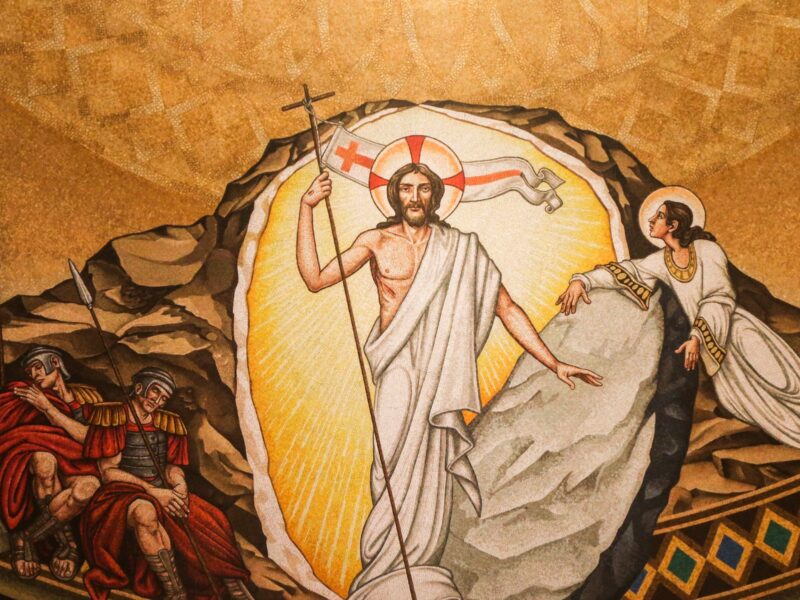
Mercy and Mission
Third Sunday of the Year. fr John Farrell explains how we are called to works of mercy and mission through our encounter with Jesus Christ.
Today we begin our Sunday readings from the gospel of Saint Luke which will continue throughout this liturgical year. Here, as the gospel opens, Luke deliberately brings forward an episode which Matthew and Mark have as occurring later in Jesus’ public ministry. In this way the story hits us with great force. It is the public and explicit Manifesto of the Messiah, the Anointed One, the Christ. Jesus sets out his programme with Spirit and with power.
The setting is his own home synagogue which he would have known from his childhood, a familiar place. The drama is played out: Jesus stands up to read, the official hands over of the large scroll of the prophet Isaiah, Jesus unrolls the scroll at his chosen place, he proclaims the prophecy. Handing back the sacred text there is silence and anticipation. “All eyes in the synagogue are fixed on him.” He sits, (to teach) and then come the resounding words of the Christ which we hear this morning in our own churches and congregations: “Today this text is being fulfilled even as you hear it”.
We Christians, who hear this read amongst us this Sunday, we have also been sent, by Jesus. We have also been anointed by his Holy Spirit. This prophecy of power and service is being fulfilled even now as we hear it today and as he, the same one, is present in our assemblies and in our mass. His mission is the same one into which we were “Christened”: baptised and anointed in the one Holy Spirit.
St Paul explains this in the second reading today – about Christian people in all their diversity and complementarity forming the Body of Christ. Any and every Christian community, parish, congregation or meeting is called to be the living embodying of the presence, salvation and mission of Jesus the Christ in that particular place and at that particular time.
Our first reading today is an account of the re-establishment of the Commonwealth of Israel after the devastation of the Exile in Babylon. Ezra the priest “learned in the Torah” and Nehemiah the Civil Administrator lead the People of God to promise to follow the Law of God as the Book of the Law is read out.
Christianity is not a religion of the book (as is often said), but of a person, the living person of Jesus who calls all to become part of the ongoing embodying of his life in each generation and in every place. Christianity is centred around the living and crucified Lord who comes to us in word and in sacrament and also in the poor, the imprisoned, the hungry and the naked, the broken hearted and the lost.
With have all become familiar with the idea of the Christian liturgy as made up of word and sacrament but it is really made up of three parts: word, sacrament and the ongoing Christian life of works of mercy which are to flow out of our worship and lead us back to it. Pope Benedict in his encyclical on Charity taught that Christianity can no more give up works of mercy than it can give up the sacraments or the Scriptures. None of the three are optional. In this “Year of Mercy” it is refreshing to remind ourselves of the essential structuring character in the Christian life of works of charity and mercy along with our devotion to the Scriptures and the sacraments.
Furthermore this outreach of mercy which is intrinsic to Christianity is truly ecumenical. In this we can work together fully. Whether we are considering the various Protestant churches of our own country or the suffering Christians of the Middle East and Africa: we were all baptised in the one Spirit and all given the same Spirit to drink.
The one Lord and Christ has sent us and anointed us, as a Spirit-filled People embodying, his presence, “to bring the good news to the poor, to proclaim liberty to captives and to the blind new sight, to set the downtrodden free, to proclaim the Lord’s year of favour”.
Readings: Nehemiah 82-6,8-10|1 Corinthians 12:12-30|Luke 1:1-4,4:14-21
The image above is a mosaic in the ceiling of St Zeno’s Chapel, which is to be found inside the Church of St Prasseda in Rome.
Sorry, the comment form is closed at this time.



A Website Visitor
Excellent.